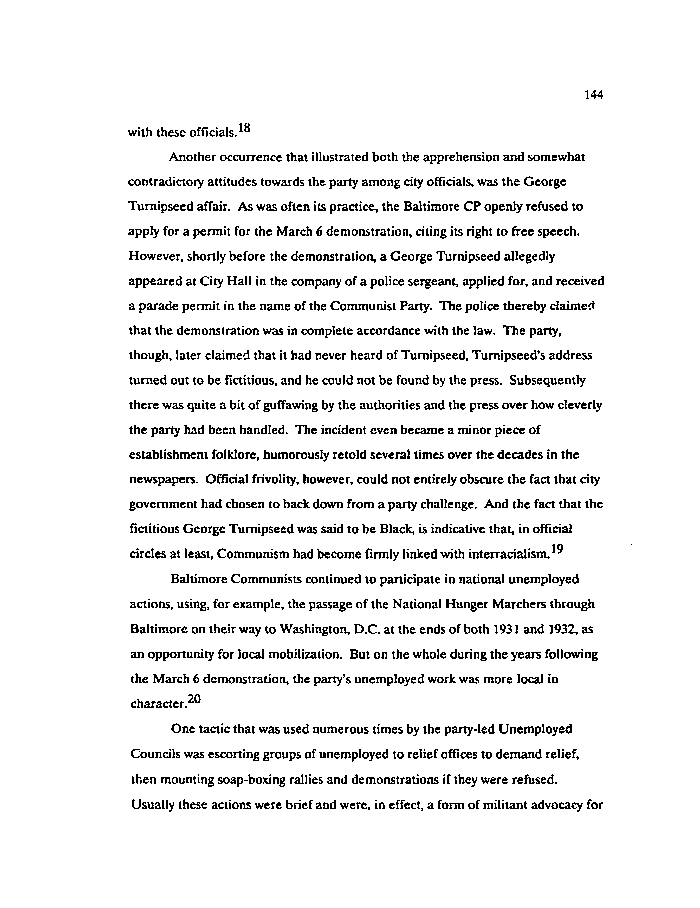|
144
with these officials.
Another occurrence that illustrated both the apprehension and somewhat
contradictory attitudes towards the party among city officials, was the George
Turnipseed affair. As was often its practice, the Baltimore CP openly refused to
apply for a permit for the March 6 demonstration, citing its right to free speech.
However, shortly before the demonstration, a George Turnipseed allegedly
appeared at City Hall in the company of a police sergeant, applied for, and received
a parade permit in the name of the Communist Party. The police thereby claimed
that the demonstration was in complete accordance with the law. The party,
though, later claimed that it had never heard of Turnipseed, Turnipseed's address
turned out to be fictitious, and he could not be found by the press. Subsequently
there was quite a bit of guffawing by the authorities and the press over how cleverly
the party had been handled. The incident even became a minor piece of
establishment folklore, humorously retold several times over the decades in the
newspapers. Official frivolity, however, could not entirely obscure the fact that city
government had chosen to back down from a party challenge. And the fact that the
fictitious George Turnipseed was said to be Black, is indicative that, in official
circles at least, Communism had become firmly linked with interracial ism. 9
Baltimore Communists continued to participate in national unemployed
actions, using, for example, the passage of the National Hunger Marchers through
Baltimore on their way to Washington, D.C. at the ends of both 1931 and 1932, as
an opportunity for local mobilization. But on the whole during the years following
the March 6 demonstration, the party's unemployed work was more local in
character.^
One tactic that was used numerous times by the party-led Unemployed
Councils was escorting groups of unemployed to relief offices to demand relief,
then mounting soap-boxing rallies and demonstrations if they were refused.
Usually these actions were brief and were, in effect, a form of militant advocacy for
|

